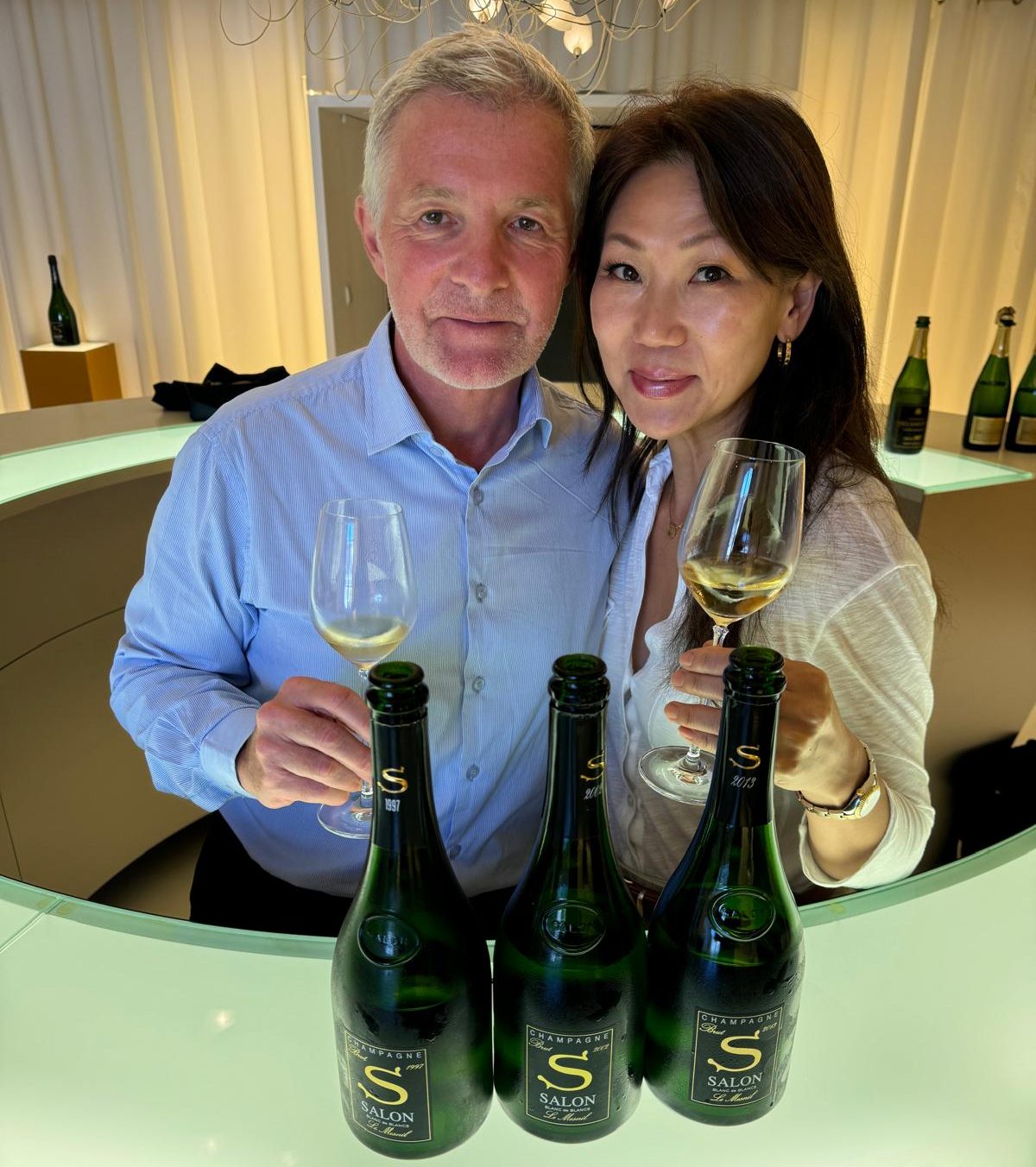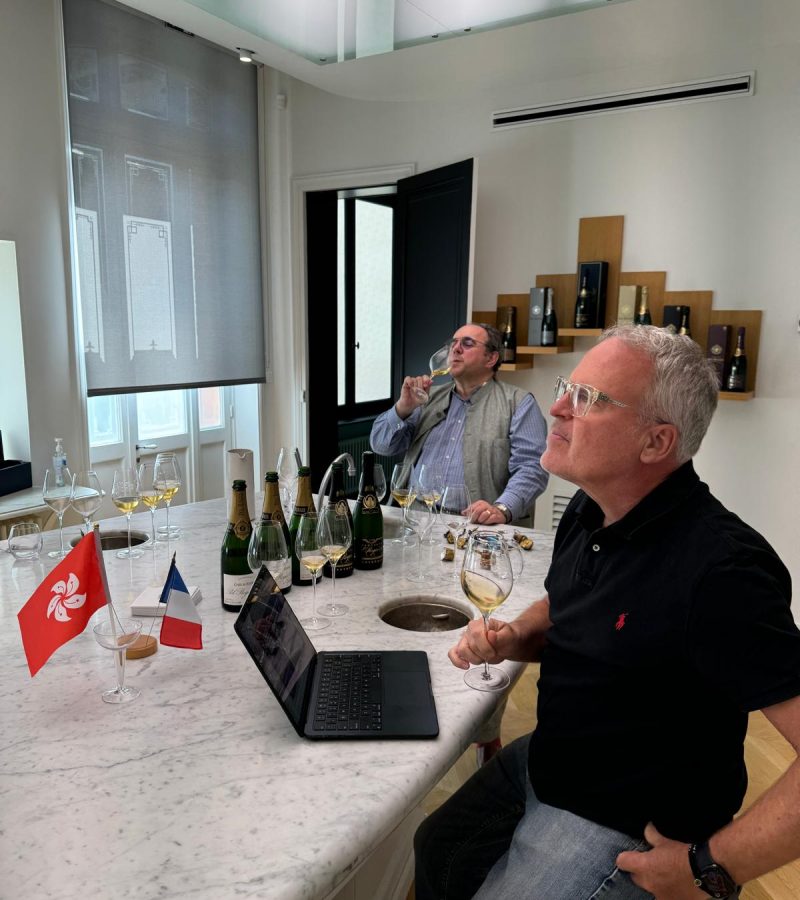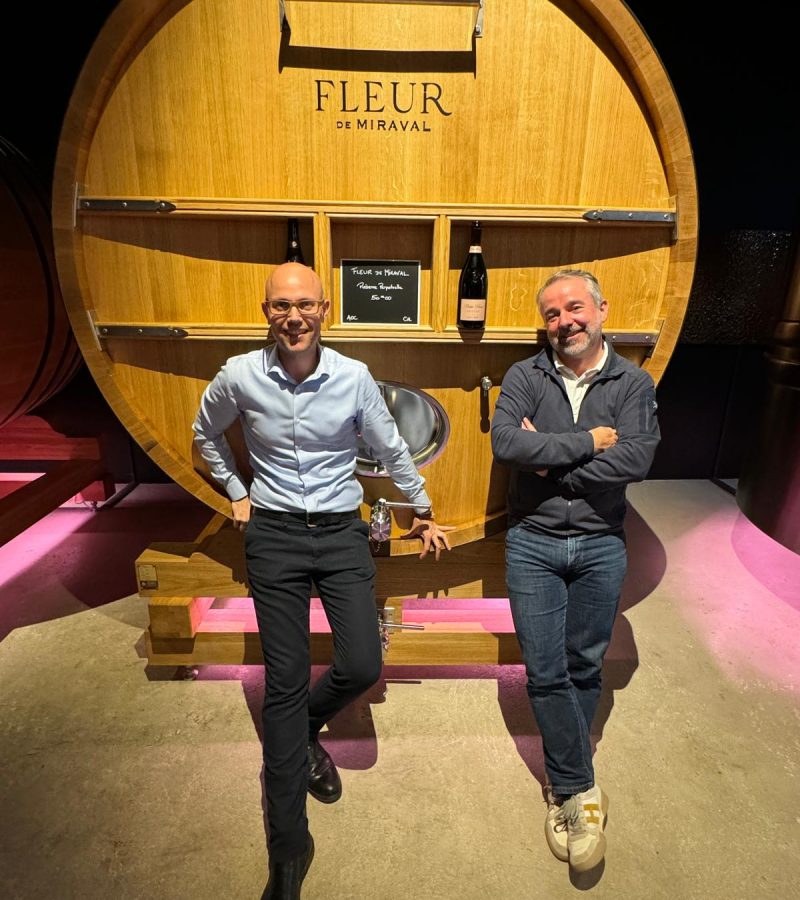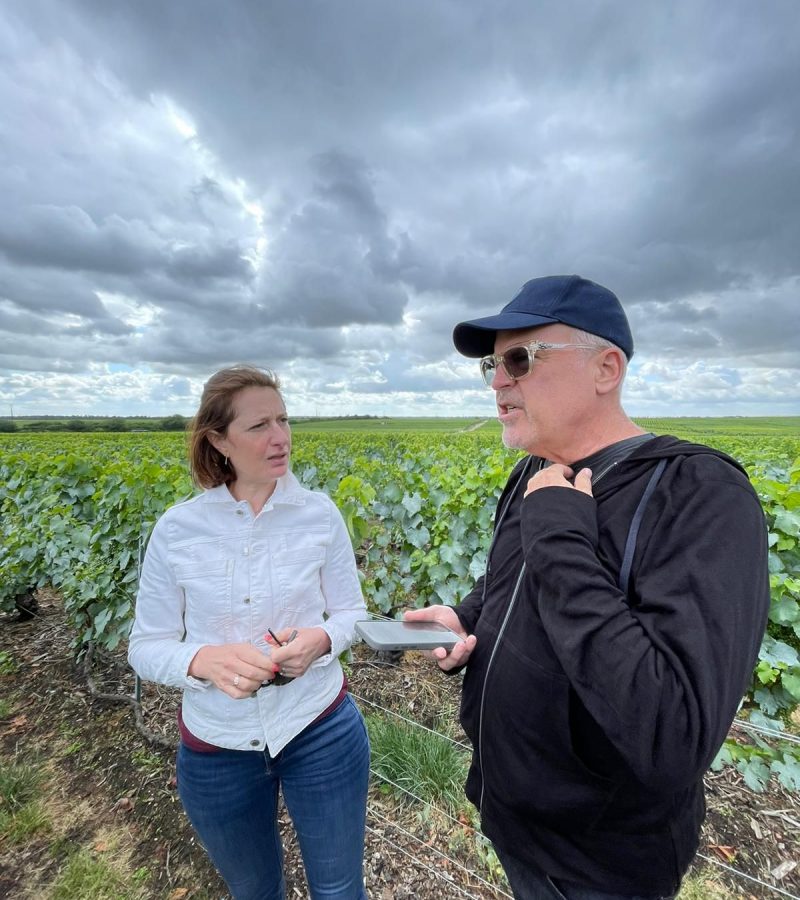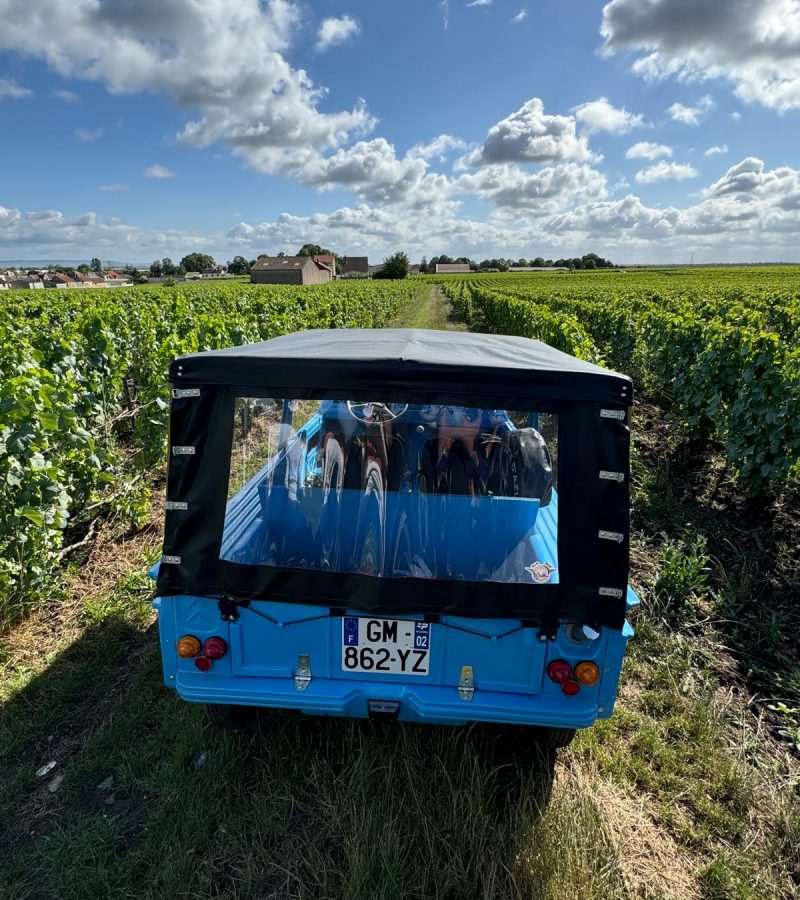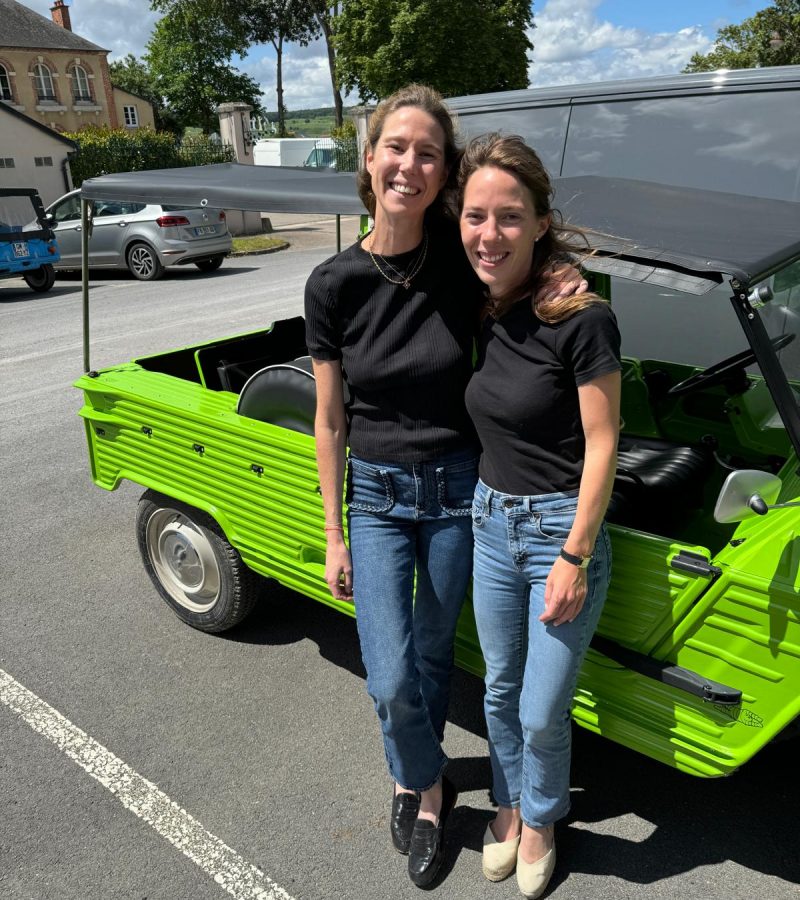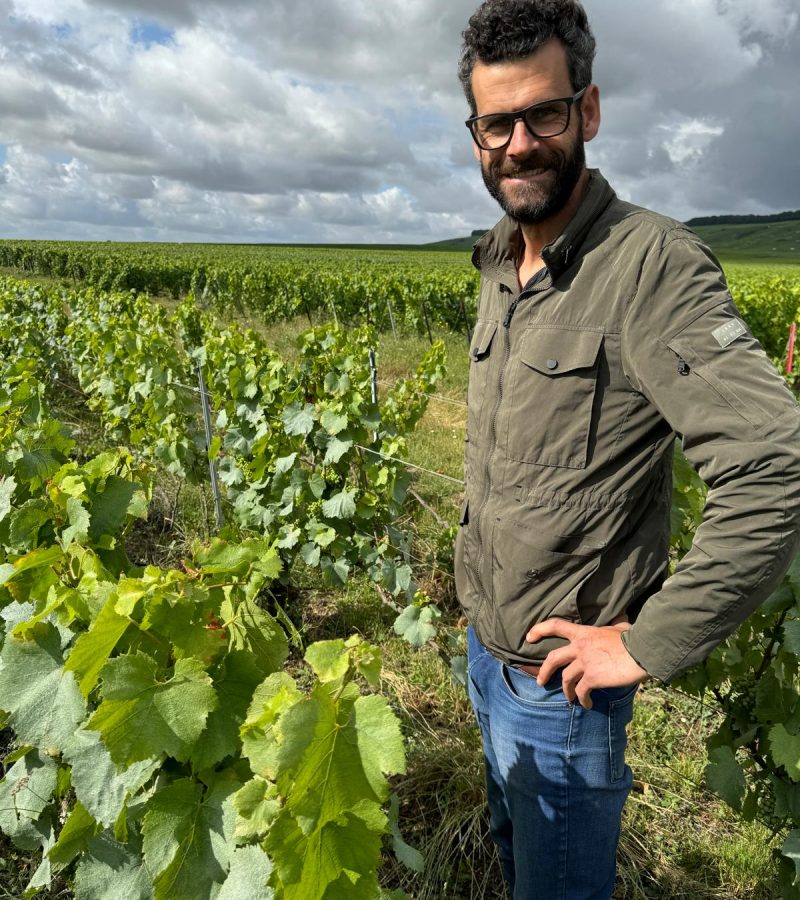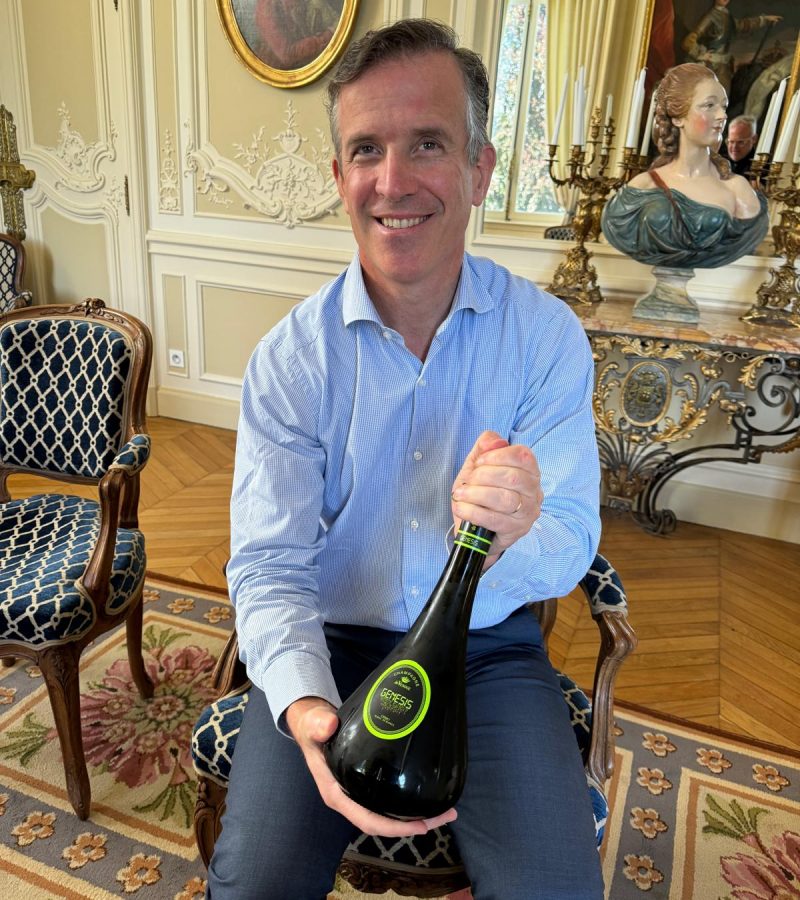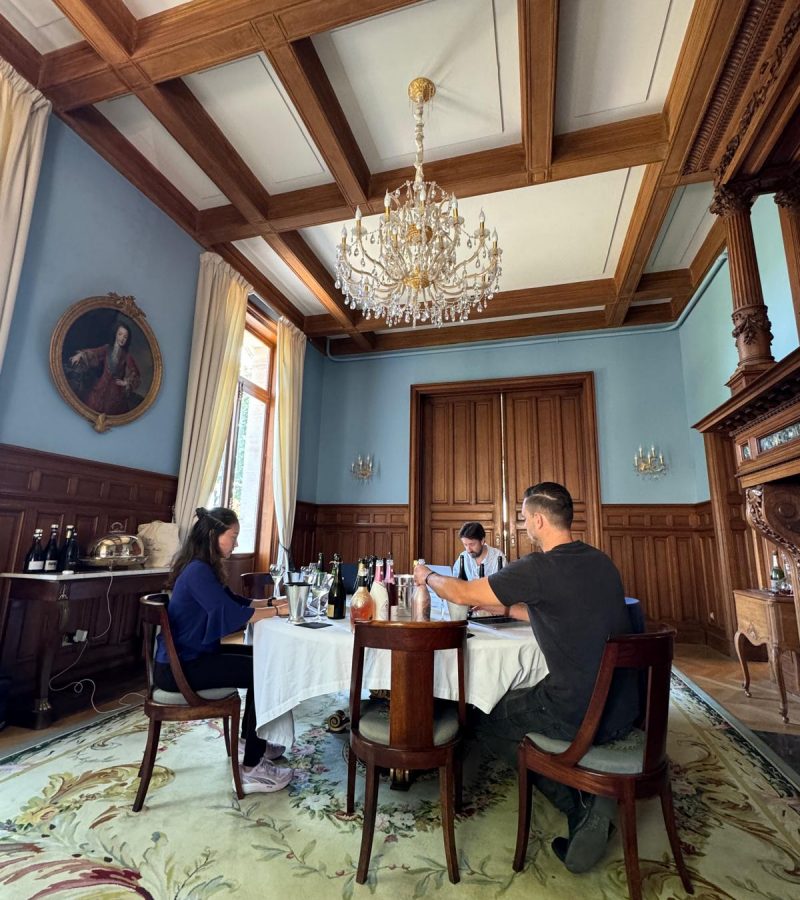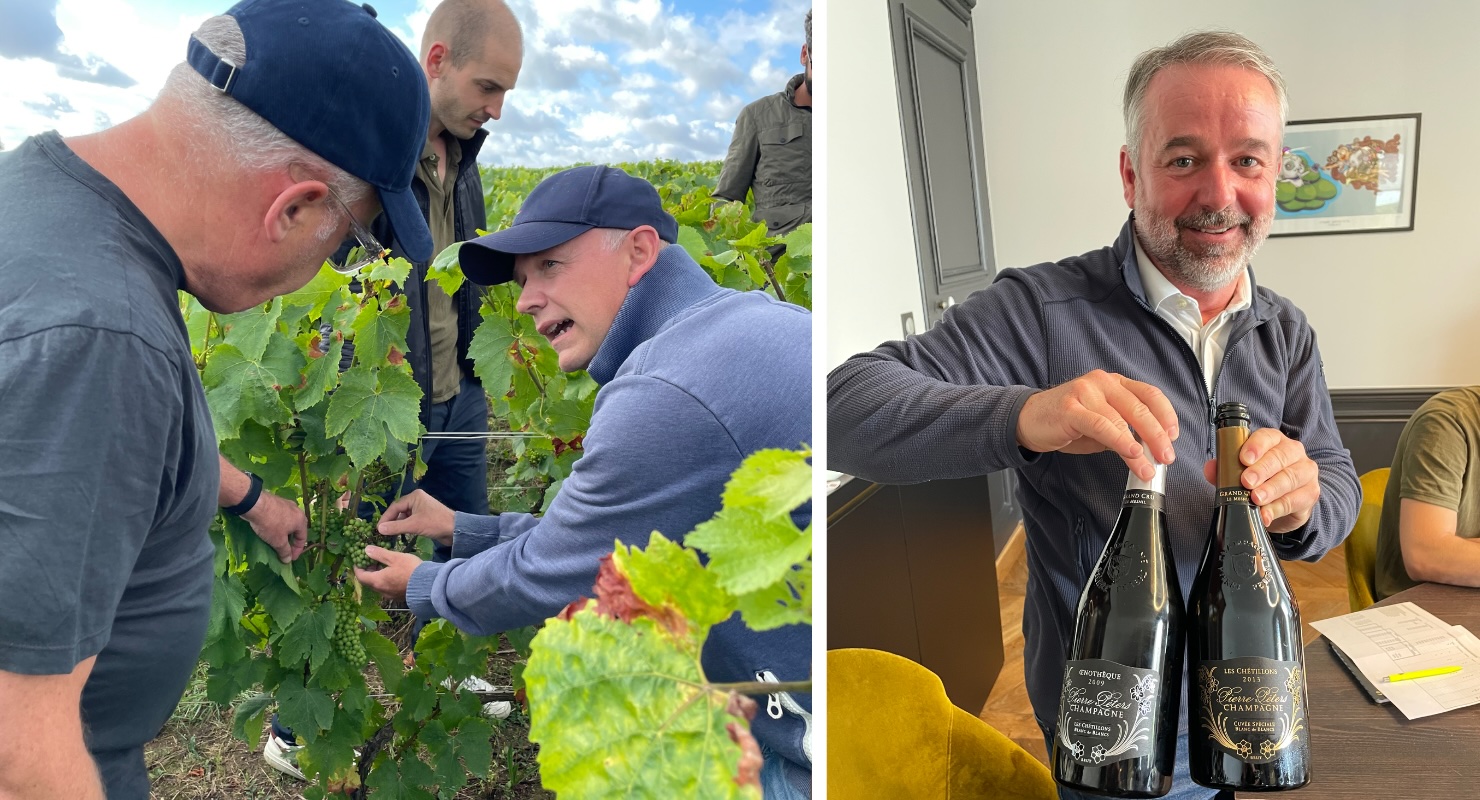
In small bright green- and blue-painted 1970s canvas-topped Citroen vehicles called Meharis, eight Champagne grower-producers and three tasters from the JamesSuckling.com tasting team navigated bumpily through the damp vineyards of the Cote des Blancs in Champagne. We were in the 33-hectare grand cru vineyard of Chetillon in Le Mesnil-sur-Oger, one of the most famous villages for chardonnay in Champagne. During various stops along the damp dirt roads, the growers explained the unique, chalky soils and microclimates of their parcels as the group walked through the rows of chardonnay vines.
The 2024 growing season so far had seen constant precipitation, with close to two years’ worth of rainfall in the last nine months. Producers said that they had been spraying their vineyards as often as twice a week, and the effects of mildew on some of the vines could already be clearly seen in the form of yellow and brown spots on the leaves, as well as gray or shrivelled brown berries within the small green grape bunches. They spoke about the difficult start and worried about a much lower yield in 2024, and yet they remained positive about the ability of their Chetillon vines to deal with the wet weather.
“It rained last night, and we can already walk here,” said Rodolphe Peters, the winemaker for Champagne Pierre Peters, who owns three plots of old vines in Chetillon, from which he has been producing a single-vineyard Champagne for the last 50 years.
“The top terroirs are seated on chalk, because of chalk’s regulating role,” Peters said of the ability of Champagne’s chalky soils to absorb and release both water and heat. The terroir of Chetillon, he added, has less than a meter of topsoil sitting atop hundreds of meters of free-draining chalk.
James Suckling, Aldo Fiordelli and I tasted over two dozen vintage single-vineyard Chetillon wines from eight independent producers that morning, from 2019 – one of the best vintages in the last 20 years, according to Peters – back to 1995. No matter how the wines were vinified, there was an electric sensation on the palate for all of them – whether it was Pierrre Moncuit’s reductive, long-aging method, Robert Moncuit’s barrique-influenced, earlier-release style, or Champagne De Sousa’s minimal-intervention approach from biodynamically farmed vines.
“You have this kind of minerality, salinity that you find in the wine,” said Marie Charlemagne, the winemaker at Guy Charlemagne. Their magnum bottling of Chetillon from the powerful 2008 vintage showed incredible freshness, as did the chalky, spicy and salty Pierre Moncuit Champagne Nicole Vieille Vigne 2008, which was made from 90-year-old chardonnay vines in Chetillon. The highlight of the tasting was Pierre Peters’ Champagne Les Chetillons Cuvée Speciale 2012 – a wine with tightness, persistence and incredible complexity.
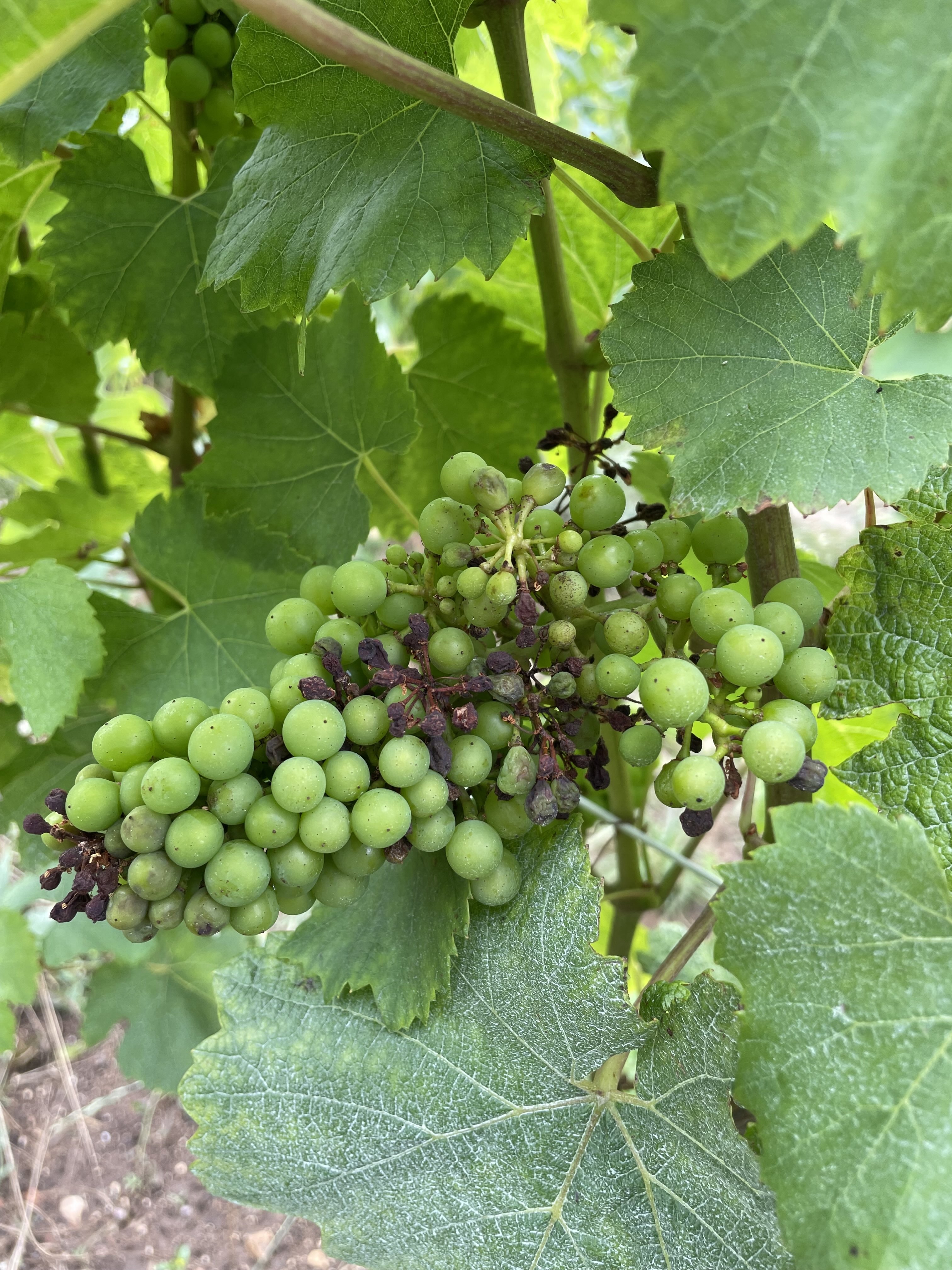
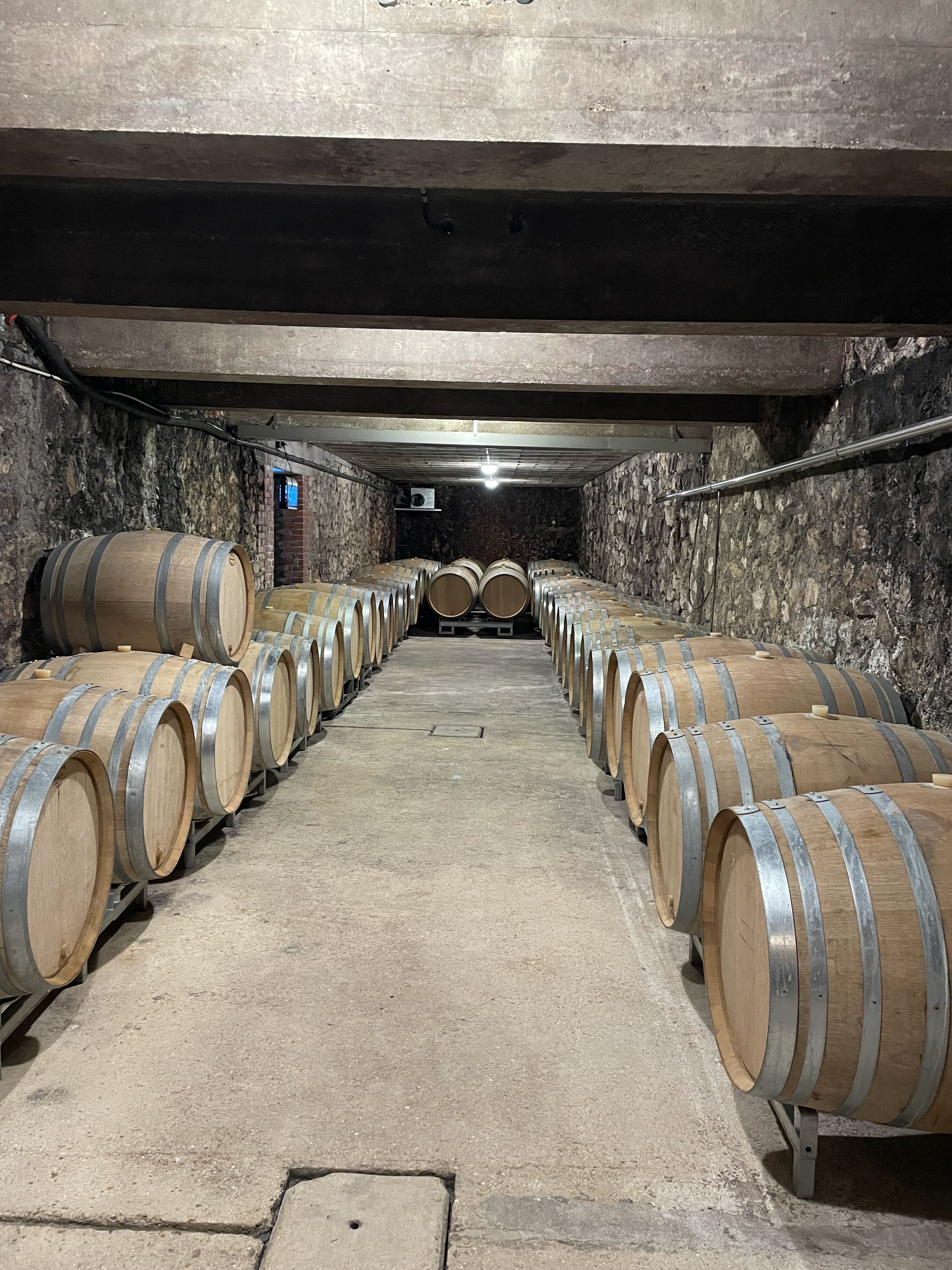
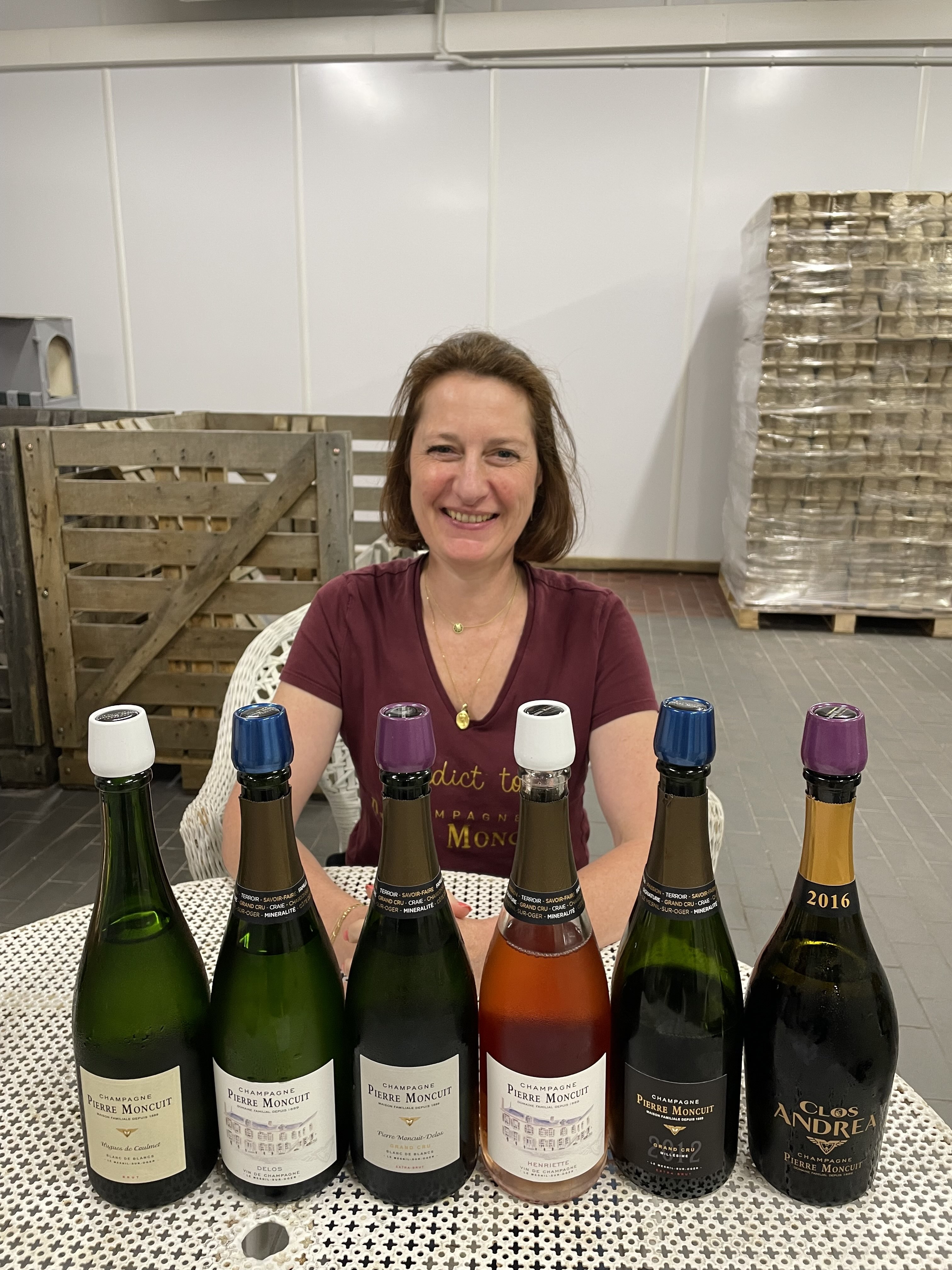
Single-vineyard Champagnes are still not very widely available, but they are certainly worth seeking out. Alongside the single-vineyard Chetillon blanc de blancs wines that wowed us in this report, single-parcel bottlings of pinot noir that impressed included the Philipponnat Champagne Les Cintres 2012, Jacquesson Champagne Dizy Terres Rouges 2014 and Marguet Champagne La Grande Ruelle 2019, as well as a poised and elegant meunier bottled only in magnum – the Christophe Baron Champagne Les Alouettes 2019.
Moreover, still wines in Champagne, called Coteaux Champenois, are equally compelling and many are noted as single vineyards. Out of the more than 750 wines tasted for this report, you’ll find more than 60 Coteaux Champenois, mostly tasted by Senior Editor Aldo Fiordelli at an extensive Coteaux Champenois event in Reims in June. Many of the top wines are from recent warm vintages like 2020 and 2022, but some are from 2021, a vintage that saw close to a 50 percent reduction in yield across Champagne due to spring frosts and downy mildew.
We wondered in last year’s report whether a warming climate could mean a return to still wines. The production of still wine reached 4,000 hectolitres in 2023, and although that is still a very small volume compared with sparkling wine, several producers that I spoke to have started bottling small amounts of Coteaux Champenois in just the last 10 years.
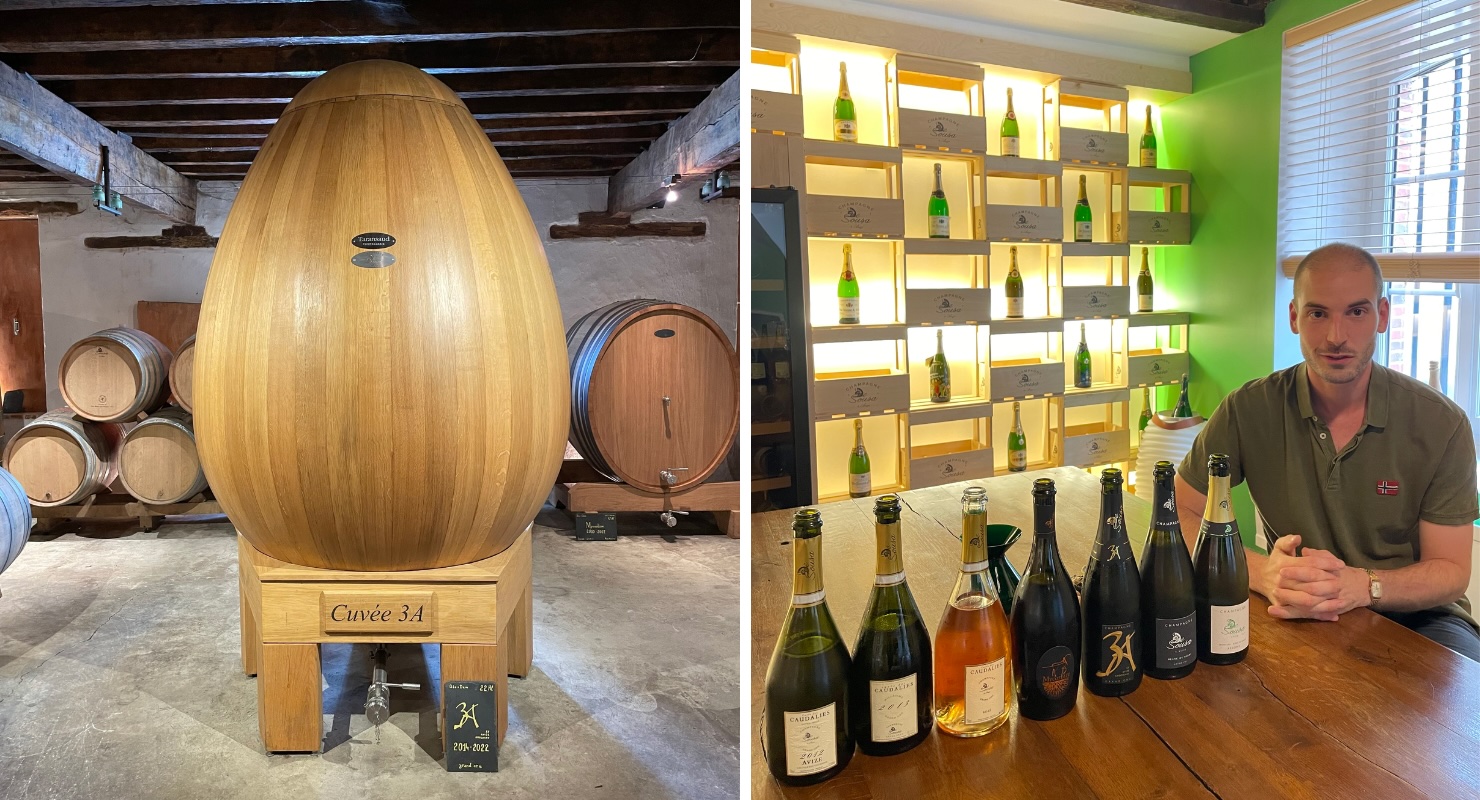
“I think it would be a shame not to try to make Coteaux Champenois,” said Pierre Moncuit winemaker Valerie Charpentier. “It’s better to do it now than 20 years ago.”
“There’s definitely bigger potential with climate change,” agreed Valentin De Sousa of Champagne De Sousa, which in 2020 began releasing a limited production of still wine. “It’s not Burgundy wine and it’s not Champagne. It’s totally different.”
We rated 14 Coteaux Champenois 96 points or above, but we recommend knowing the producer rather than taking a gamble, as we did with a natural-style red Coteaux Champenois we tried at a wine bar in Epernay that we found somewhat disappointing.
READ MORE BURGUNDY 2024 TASTING REPORT: BEAUTY AND THE BEAST
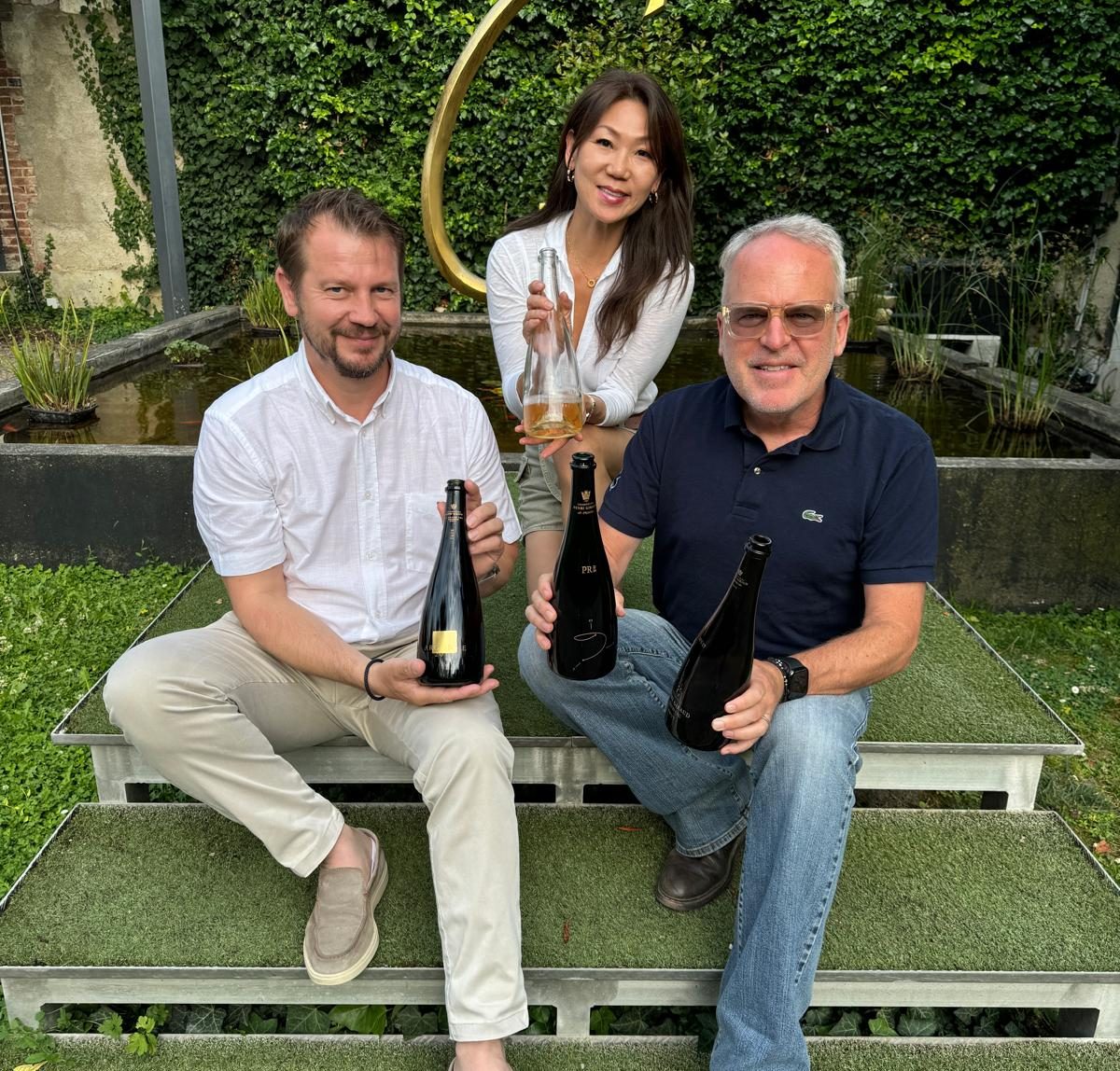
“The problem is a lot of people make Coteaux Champenois without the know-how, so it damages the image of Coteaux Champenois,” said Sebastien Le Golvet, who made an excellent, stunningly mineral pinot noir, the Henri Giraud Coteaux Champenois Rouge Grand Cru Cuvée des Froides Terres 2019. Check out the top red and white still wines in this report from Bereche & Fils, Domaine R.H. Coutier, Domaine Carre Freres, Egly-Ouriet, Benoît Lahaye and Larmandier-Bernier.
The future of chardonnay, particularly in the chalky subregion of the Cote des Blancs, is shining brightly, according to producers that we spoke to during our week-long trip. And though the blanc de blancs style of Champagne (strictly made from white grapes, usually pure chardonnay) appears richer than in the past, the wines we tasted retain plenty of freshness.
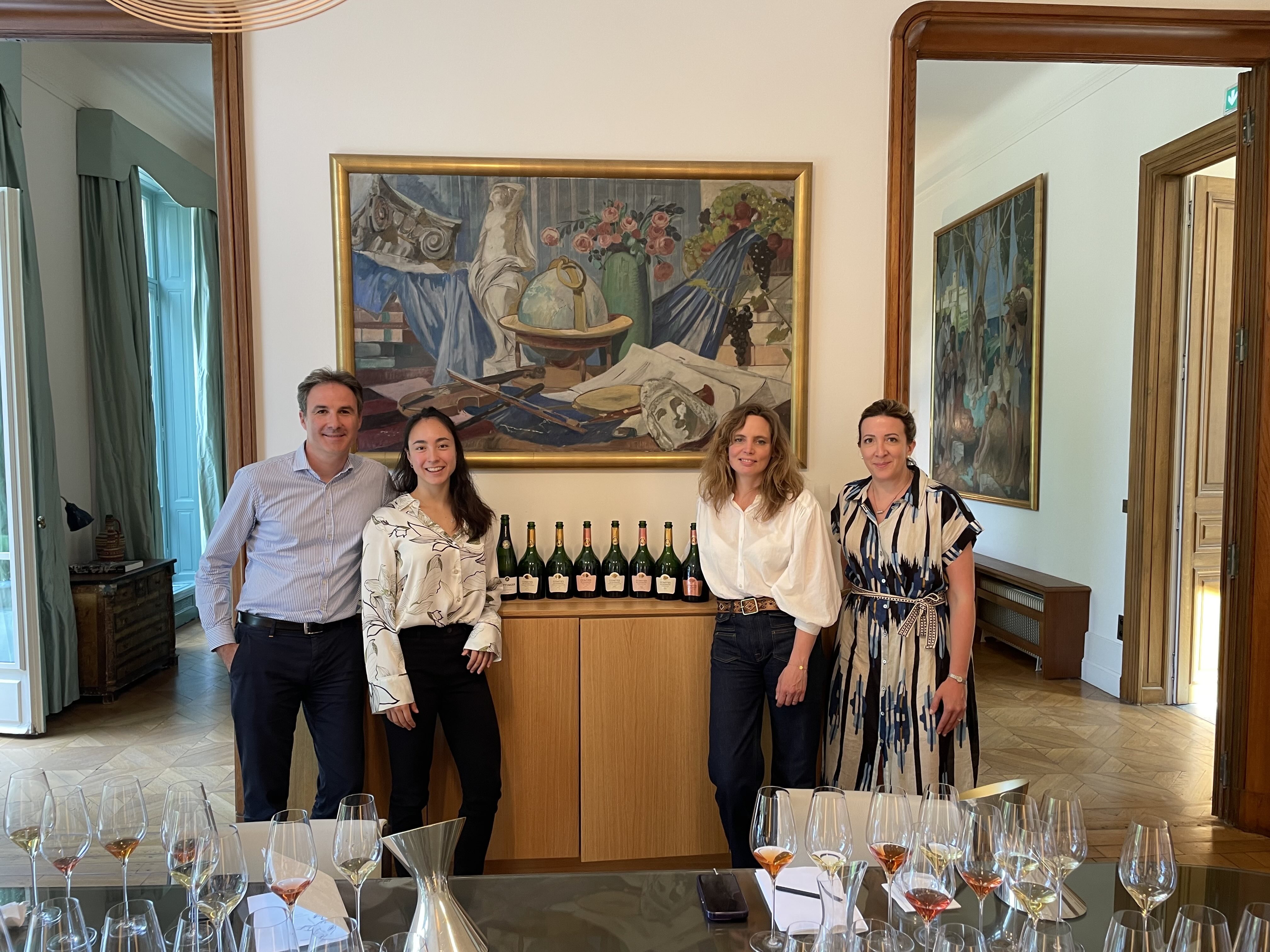
Four of our top six wines this year are blanc de blancs, including the Billecart-Salmon Champagne Cuvée Louis Salmon Blanc de Blancs Brut 2012, which is electrifying, mouthwatering and driven, with very fine and silky bubbles. It’s on par with the Pierre Péters Champagne Les Chetillons Blanc de Blancs Cuvée Speciale 2012, as is the Taittinger Champagne Comtes de Champagne Blanc de Blancs 2013, the latest release of Taittinger’s top cuvee – a long, sleek and mineral Champagne that is now more expressive than when I tasted it prerelease last year, with plenty of tension and precision.”
Taittinger’s Comtes de Champagne Brut Rosé 2012, to be released toward the end of this year, is just as stunning, very precise and seamless, with a chalky, oyster shell-like minerality. 2012 and 2013 were two back-to-back great vintages. 2012 made expressive and balanced wines, while 2013 was a long-ripening, cool vintage – one of few in the last couple of decades with an October harvest – resulting in wines with laser-sharp acidity and tension.
“This type of vintage [2013] is totally different,” said Alexandre Ponnavoy, the cellar master at Taittinger. “You can feel the minerality and the chalk in this type of vintage.”
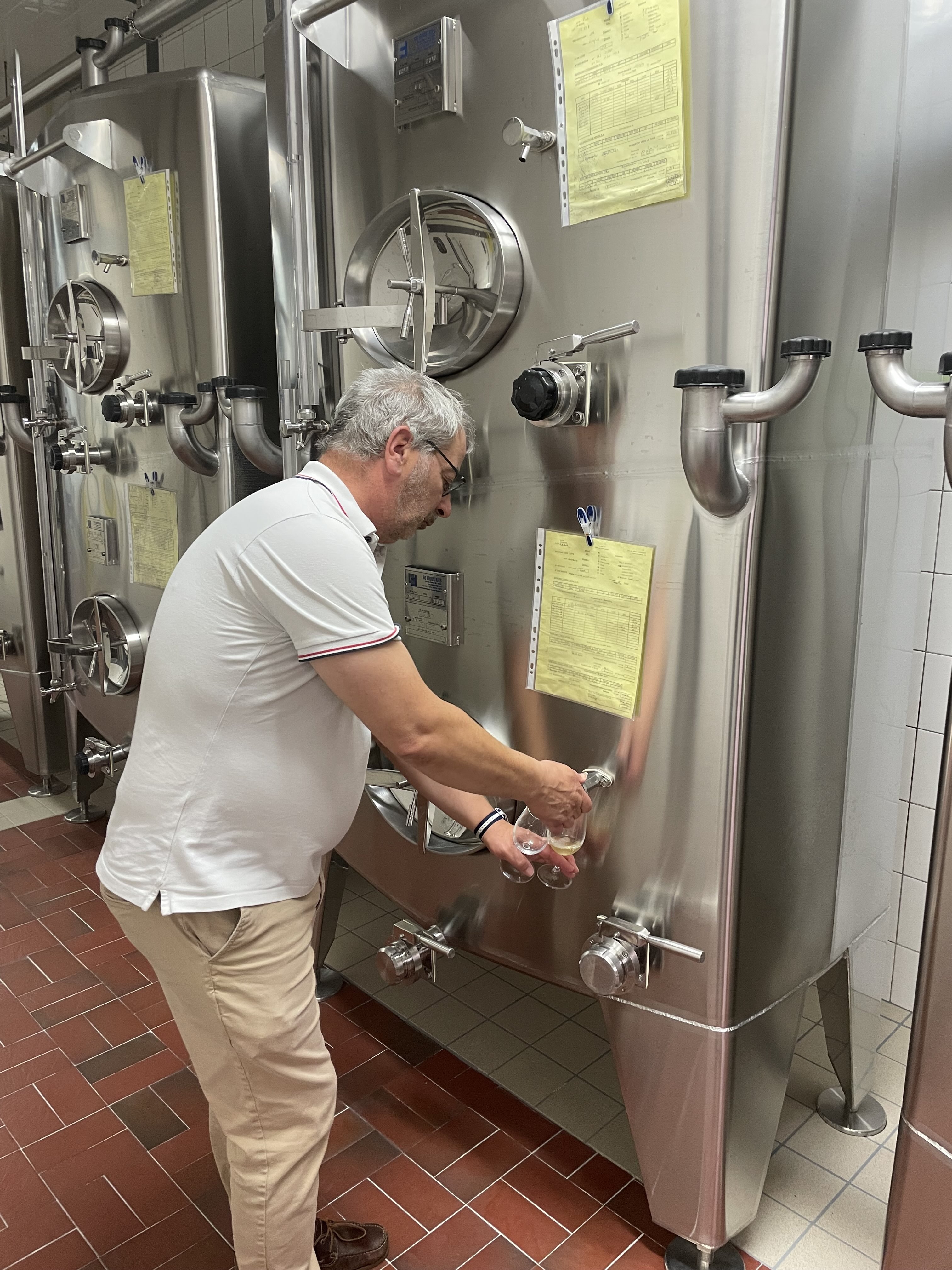
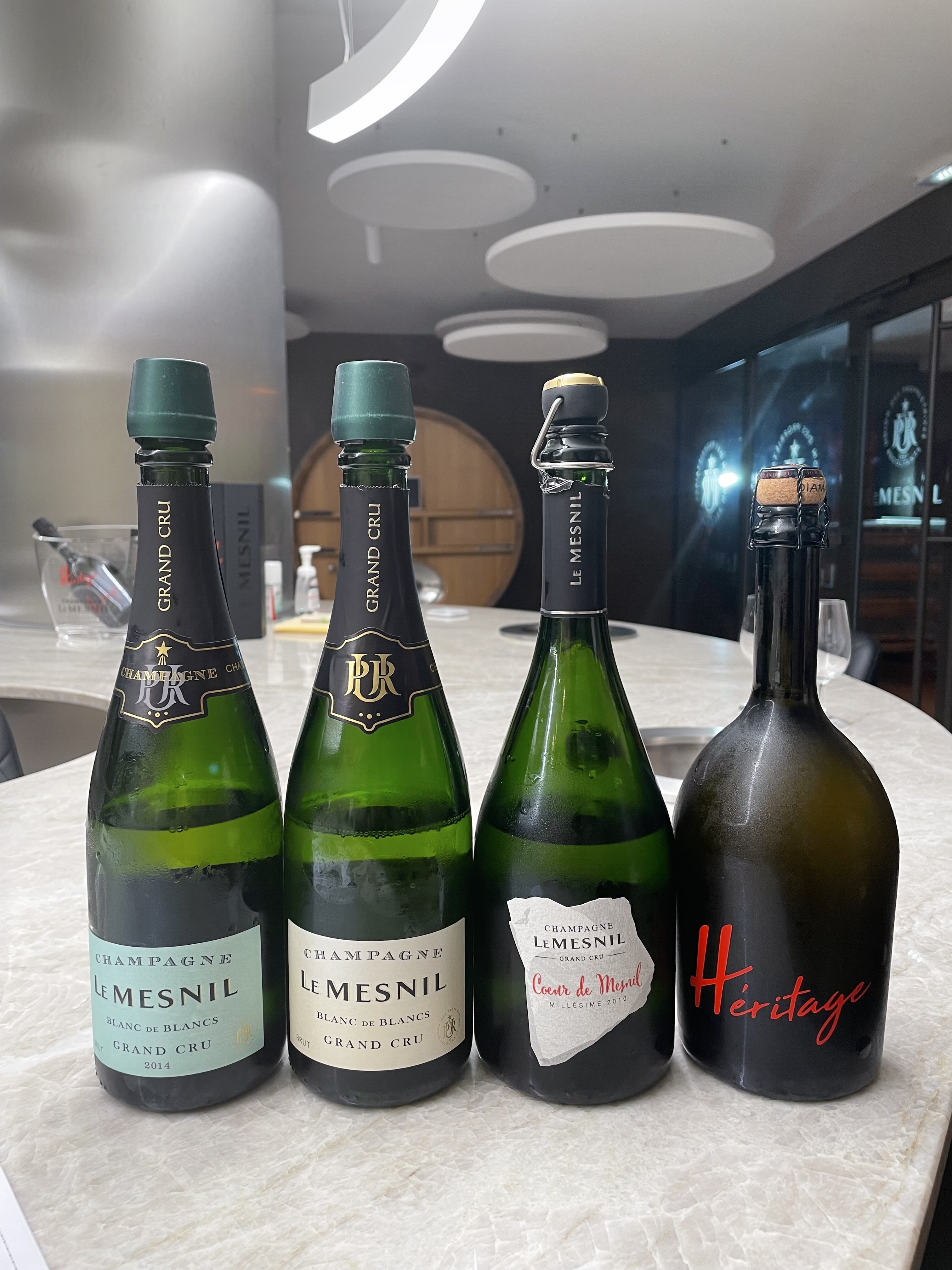
Many recent vintages, like 2015, 2017, 2018 and 2020, were characterized by warm and/or dry conditions in the growing season and early harvests. Some of the 2015-based wines in our tastings showed hints of green or bitter phenolics, suggesting that grapes were picked before full phenolic (skin) ripeness.
But winemakers in Champagne have many tools to play with, such as reserving significant stocks of wine for the use of future nonvintage blends. I tasted reserve wine (still wine that has yet to undergo secondary fermentation in bottle) from the 2007 harvest at Champagne Le Mesnil, and the freshness seemed to defy the almost 17 years that have passed.
“People say you won’t be able to make Champagne anymore, but I think with 2018 showing such developed signs of climate change, we still made blanc de blancs. We still have room to maneuver,” said Ruinart winemaker Frederic Panaiotis, who has started producing a new line of blanc de blancs with zero dosage called Blanc Singulier.
READ MORE BORDEAUX 2021 TASTING REPORT: TRAGIC BEAUTY AND SOME SWEET SAVIORS
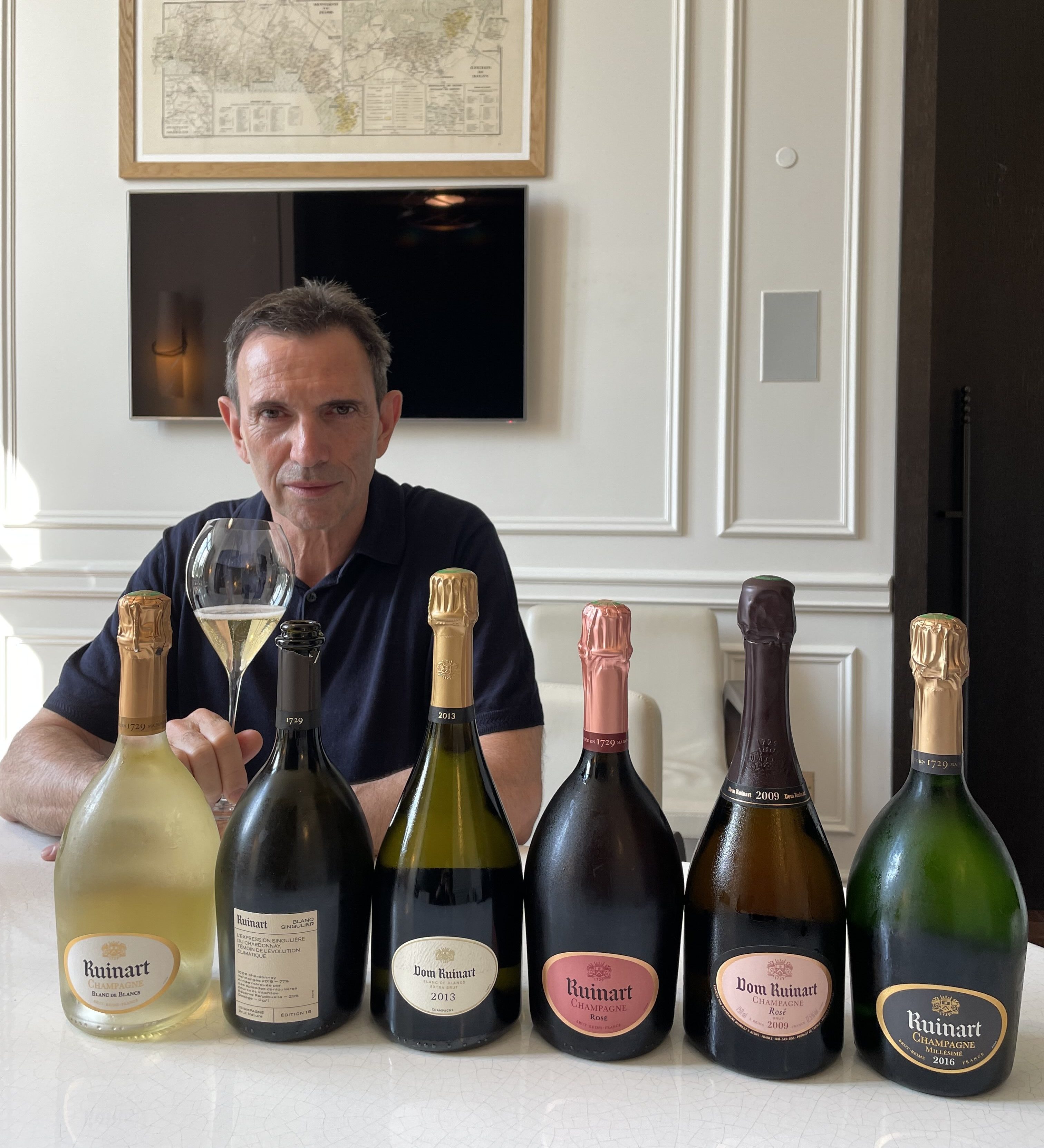
A more recent late-ripening vintage that impressed us in our tastings was 2016.
“I think 2016 has enormous potential,” said Sebastien Le Golvet, the cellar master at Henri Giraud, who compared it to 1996. “It was a good year for everyone. It’s elegant, it has ripeness, but acidity and tension. I think it will be a vintage we can drink or keep.”
The Henri Giraud Champagne Argonne Brut 2016 is a powerful and driven yet elegant blend of pinot noir with some chardonnay from the grand cru village of Ay, all aged and fermented in new oak barrels. It’s the best that we have tasted since their 2012.
Over the last decade, aside from 2016 and 2019, Champagne growers and producers have grown accustomed to challenges in the vineyard that are habitually faced in warmer wine-growing regions.
“The new challenge is deciding when to pick the grapes in earlier [ripening] years,” Panaiotis said. In warmer years, grapes accumulate sugar and lose acidity (physiological ripening) more rapidly than they achieve aroma and tannin ripeness in the skins (phenolic ripening).
“2019 was the last vintage we had perfect synchronisation of phenological and physiological maturity,” Panaiotis added. “In a dry year like 2015, and the warm 2022, how long can you wait? You can’t end up with crazy sugar and low acidity.”
Other winemakers are also positive about future vintages, even hot and dry ones, and despite the recent decline in the global Champagne market, most small producers said their sales were still strong. “I am happy with our sales,” said Peters, who organized the Chetillon tasting, not to mention the 1970s Meharis to tour the vineyards. “And I think that 2019 is the vintage of my career!”
– Claire Nesbitt, Associate Editor, with contributions from James Suckling.
Note: You can sort the wines below by vintage, score and alphabetically by winery name. You can also search for specific wines in the search bar.
